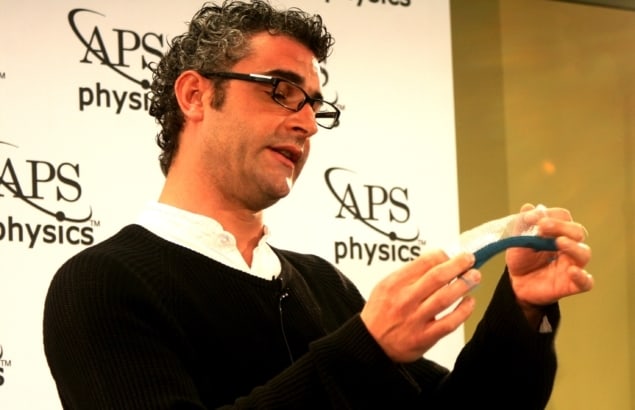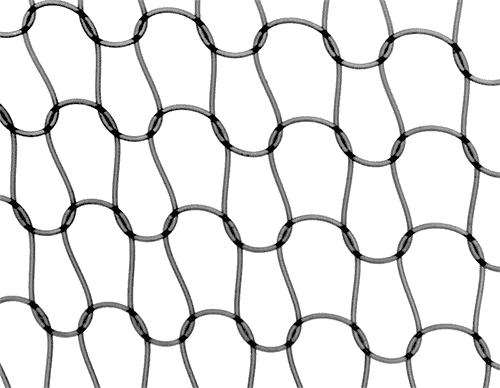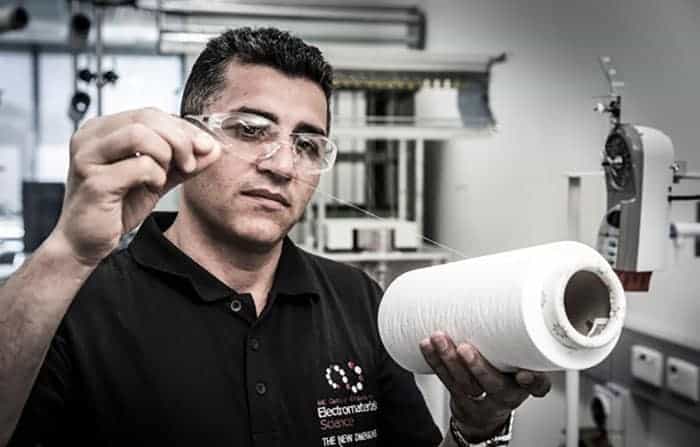
As well as being a popular and pleasant hobby, knitting is a thousand-year-old technology and, unlike weaving, it can produce loose yet extremely stretchable fabrics. Researchers in France have now developed a model to describe how individual stitches in a knitted fabric deform when stretched. The work could help in the design of thread-based smart self-folding materials with specific and complex elastic properties for use in applications such as sports textiles or soft robotics.
“Our model and experiments have identified which aspects are purely structural (like the shape of the knitted fabric under tension) and those that depend on the material itself (such as the amplitude of the applied force),” explains Samuel Poincloux of the Ecole Normale Superiéure in Paris. “Our model is based on a Lagrangian approach, which means that we want to find the shape of the fabric that minimizes energy, which is assumed to depend on the bending energy of the yarn, while respecting certain constraints. This assumption implies that the yarn is inextensible, so the first limit in our model is to keep the length of the yarn constant when deforming the entire fabric.
“The second constraint ensures that the topology of the yarn (the stitch pattern) is conserved during the deformation.”

Unlike woven fabrics, which are made using multiple threads that cross each other, and which can be modelled by the so-called Chebyshev net, knitted materials consist of a single thread that forms intertwined loops, or stitches. Although the constituent yarn does not deform much when stretched, the individual stiches can deform by a great deal because they are curved and because the yarn can slide from one stitch into neighbouring stiches. This is what makes knitted materials so flexible (they can stretch to twice their length) and explains why they can easily drape over other objects.
Previous models of knitted material assumed that it stretches uniformly when deformed, but these theories neglect the position of individual stitches in the fabric. The new model takes into account the fundamental mechanical behaviour of interlocking threads in each stitch.
Knit behaves similarly to a rubberlike material
The researchers crafted a fabric using a model elastic yarn knitted into the common stockinette, or “point Jersey” pattern in which the stiches are organized along rows and columns (called “course” and “wale” respectively). The 27-cm-wide sample was made from a thin nylon-based filament and consists of a grid of 51 x 51 stitches. They then subjected the material to some mechanical tests in which they stretched it along the wale direction at a constant speed of 0.1 mm/s while clamping it along the course direction. They followed the mechanical behaviour using a traction bench equipped with a dynamometer and imaged the stitched pattern using a digital camera.
The team, which is led by Frédéric Lechenault, found that the knit behaves similarly to a rubberlike material: It is very stretchable and has a geometric Poisson ratio of nearly 0.5. The individual stitches also deform by elongating in a way that minimizes the energy associated with bending the thread.
Although the model was specifically applied to the stockinette pattern, it provides a general framework for studying a large class of knitted materials, including those used in advanced engineering and biomedical applications, say the researchers.
Detailing their work in Physical Review X 10.1103/PhysRevX.8.021075, they say that they now plan to study the effects of friction at the stitch crossing points in their knit. “We discovered that this friction adds a fluctuating component to the mechanical response and is similar to avalanching phenomena such as earthquakes or granular materials,” Poincloux tells Physics World. “A paper on these results has been just been accepted in Physical Review Letters and a preprint is available at arXiv:1803.00815.”

Knitted nanotubes spin an electromechanical yarn



